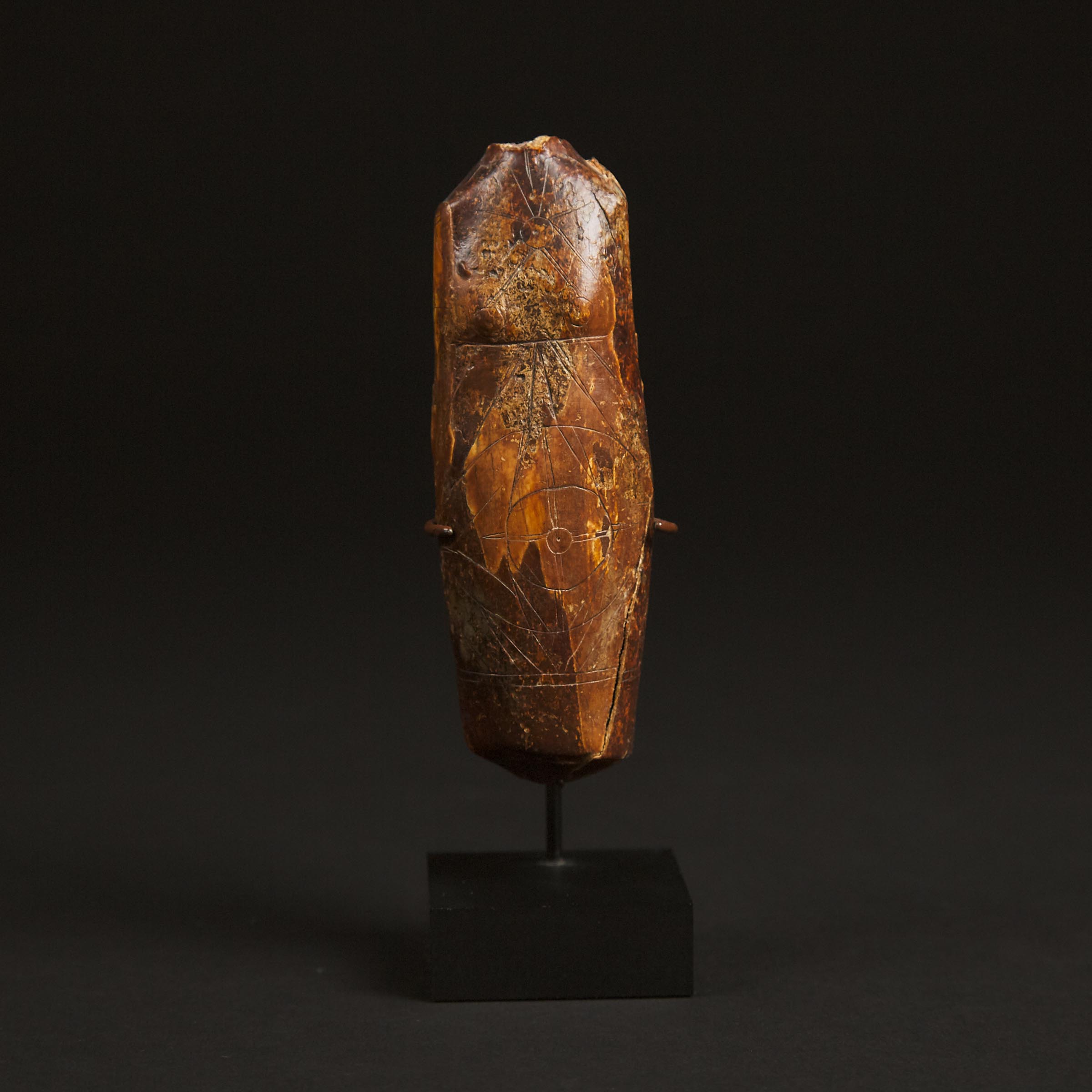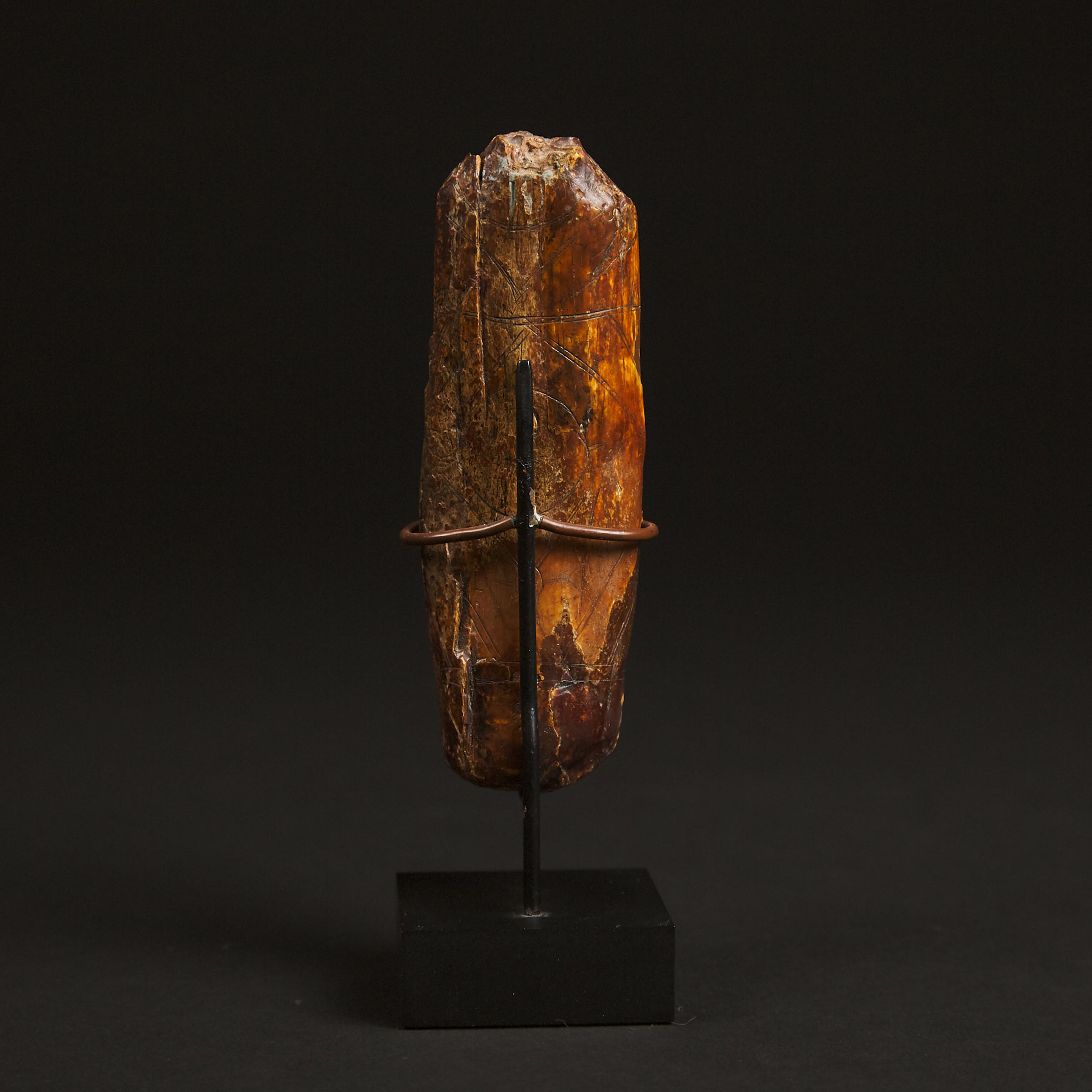Lot 2
Female Figure, Old Bering Sea I, Okvik, Sivuqaq (St. Lawrence Island), ca. 100-300 CE

Additional Images

Provenance:
Bill Johnstone collection, Carlisle, UK
Exhibited:
American Federation of the Arts, Ancient Eskimo Ivories of the Bering Strait, July 1986
Note:
Okvik is the earliest known phase of so-called Paleo-Eskimo culture, dating ca. 250 BCE – 100 CE, distinguished mainly by a monumental style of human or humanoid representation carved on a small scale.
The possible religious or ritual significance of Old Bering Sea sculpture is unknown, however characteristics present in Okvik figuration, including distorted facial features, implied skeletal marks, and the presence of tattoo patterns (as in the present work), are prominent in figuration associated with the supernatural in the earliest known Western Arctic artistic traditions.
The present artwork is an important sculpture with characteristics in keeping with subtype C of the Okvik style, as defined by Henry Collins et. al. 135, it is characterized by subtly carved breasts, and a surface embellished with finely incised parallel lines often radiating from small concentric circles, the latter appearing with star-like spiked designs on the stomach and lower back of the figure. [1] Typical of Okvik sculpture, the figure’s torso is truncated and limbless. The head has also been broken away, and while an inherent point of structural weakness in the sculpture, the decapitation of Okvik figures has been noted as a possible ritual act. [2]
(1) Wardell, Allen, Ancient Eskimo Ivories of the Bering Strait, (Maine: The American Federation of Arts, 1986), 36.
(2) Fitzhugh, William W., Julie Hollowell, and Aron L. Crowell, Ancient Gifts from the Ancestors; Ancient Ivories of the Bering Strait, (New Haven: Yale University Press, 2009), 216.
Many countries prohibit or restrict importation or exportation of property containing ivory, whale bone, sealskin, and/or products derived from other endangered or protected species, and require special licenses or permits in order to import or export such property. It is the responsibility of the buyer to ensure that the item is properly and lawfully exported / imported. Please do not hesitate to contact one of our specialists for further details.


